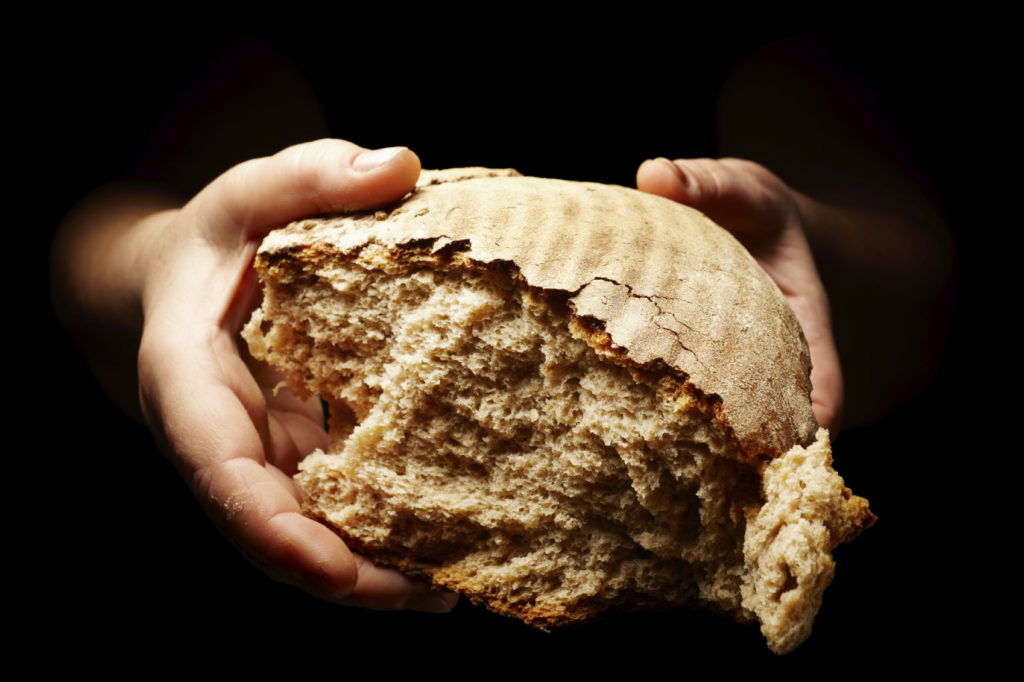- General
Ancient yeast, doggy bread, imaginary ovens and cheap naan

We love the way bread pervades almost every area of life. Stories about bread turn up on every continent, in every language. It just wouldn’t happen if humans were ambivalent about bread – it’s all about passion. Here’s the latest crop of stories from our sector.
Walk like an Egyptian – Ancient yeast’s 5000 year snooze interrupted
There you are, snoring happily away, then someone comes along and wakes you up. That’s what happened to the ancient Egyptian yeasts recently used to bake modern bread. They were discovered snoozing deep inside the pores of old Egyptian pottery by Seamus Blackley, amateur Egyptologist, a co-inventor of the Xbox and keen baker.
Mr Blackley frequently posts images of his breads on social media. Many of them, he confesses, taste awful. But the Egyptian yeasts performed beautifully. First Mr Blackley extracted them from the pottery without breaking the precious artefacts, aided by archaeologist Dr Serena Love, then he and the microbiologist Richard Bowman identified the dormant fungus.
Determined to create a starter from a scrap of the sleepy yeast, Mr Blackley fed it with his own grain that he self-milled using barley and einkorn, an early form of wheat first domesticated around 8000 BC. The starter apparently smelled very different from modern ones, with smaller bubbles, a less pungent smell and a more active personality.
How did Mr Blackley know the yeast really came from the old pottery, not just from the yeast-filled air? To rule out contamination the yeast samples were sequenced to reveal their genetics, which were then compared to modern yeasts.
It’s remarkable that a simple yeast culture can go to sleep for aeons then come back to life, but then again yeasts are extremely robust. The main thing is the flavour, so how did the resulting bread taste? By all accounts it “created a nice structure and a cake-like crumb – very soft”, with a caramel-like scent and a sweeter flavour than modern sourdough. Yum.
Should you share your buttie with a pooch?
Can dogs eat bread? It’s just as appealing to canines as it is to humans, so what’s the verdict? Experts say a small amount of plain white or brown bread won’t harm your dog, as long as they don’t suffer from a wheat allergy. But because bread contains carbohydrates, you shouldn’t feed your dog bread as a matter of course.
Avoid bread with raisins in it because raisins are poisonous to dogs. It’s also bad for dogs to feed them garlic, nuts, and some of the artificial sweeteners found in supermarket loaves. They can cause anything from diarrhoea to pancreatitis and kidney issues.
Some people use bread to calm their dog’s tummy when it’s upset, but vets recommend plain white rice.
And raw dough is a total no-no, since the dog’s stomach acts like an oven and the dough rises, eventually bloating their gut. If your dog eats raw bread dough take them to the vet. Worse still, yeasts can make a dog drunk, which can lead to alcohol toxicosis involving seizures, depression, weakness, hypothermia, unsteady walking and even a coma.
An imaginary lack of bread ovens takes the blame for Zimbabwe’s wheat shortages
In Zimbabwe the leading political party Zanu PF has come up with a ‘ridiculous solution’ to the nation’s chronic long-term bread shortages. The ruling party is blaming a lack of bakery ovens for the problem, but experts say it’s total nonsense.
Not so long ago even the worst off in Zimbabwe could afford a loaf. Now, as the country’s economic turmoil escalates, bread is a luxury only affordable for the rich. In this case bread shortages are being seen as a sign of leadership failure and poor governance.
To grow a wheat crop you need a sustainable agricultural sector. For that to happen you need supportive political policies, positive incentives and efficient markets. And these in turn rely on a well-organised culture. This is extremely difficult to achieve in a country where financial institutions consider land a ‘dead asset’, something not worth looking after or investing in.
Zimbabwe has a crop of enterprising farmers, of course, but they don’t have the power needed to bring change. Producers need to pay farmers a reasonable amount for their wheat, markets must be free and open, bakeries have to be able to afford to buy wheat, and the people need to be able to afford the bread.
None of this is happening at the moment, despite Zimbabwe throwing $3 billion US dollars at their ailing agriculture sector.
Bargain naan in Pakistan
In Pakistan the price of staple breads is spiralling because millers across the country have raised the price of flour by up to 25% because of increased electricity prices, interest rate rises and the hike in the cost of imported packaging materials. In reaction the Prime Minister Imran Khan has demanded that the prices of naan and roti breads are slashed, taking immediate steps to revert prices back to pre-June levels. The nation’s federal cabinet agreed, and price reductions are on the cards.
We make superb breads
We’ll see you next time. In the meantime if you fancy a free sample box of gorgeous artisan breads, just ask.



